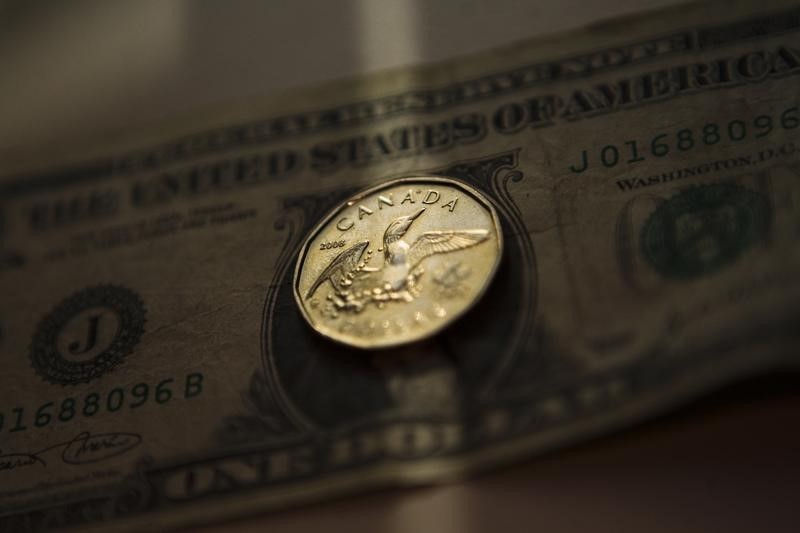Investing.com - The U.S. dollar rose against its Canadian counterpart on Thursday, easing off a two-week low after the release of upbeat U.S. economic reports and as the commodity-related Canadian currency seemed to shrug off the rebound in oil prices.
USD/CAD hit 1.3713 during early U.S. trade, the session high; the pair subsequently consolidated at 1.3687, adding 0.10%.
The pair was likely to find support at 1.3634, the low of February 4 and resistance at 1.3899, Wednesday’s high.
The U.S. Department of Labor said the number of individuals filing for initial jobless benefits in the week ending February 13 decreased by 7,000 to a 12-week low of 262,000 from the previous week’s total of 269,000. Analysts expected jobless claims to rise by 6,000 to 275,000 last week.
In addition, the Federal Reserve Bank of Philadelphia said that its manufacturing index improved to -2.8 this month from January's reading of -3.5. Analysts had expected the index to hit -3.0 in February.
The greenback had weakened mildly after Fed policymakers said, in the minutes of the bank’s January policy meeting released on Wednesday, that tighter global financial conditions could weigh on the U.S. economy and considered changing their planned path of interest rate hikes in 2016.
Meanwhile, the Canadian dollar showed little reaction to the rise in oil prices.
Crude oil futures moved back above $31 a barel on Thursday after Iranian Oil Minister Bijan Zanganeh said on Thursday that he supports efforts by OPEC members to keep prices stable, but did not say if Iran would cap its output at current levels.
In Canada, data on Thursday showed that wholesale sales increased by 2.0% in December, beating expectations for an uptick of 0.2%. Wholesale sales gained 1.9% in November, whose figure was revised from a previously estimated 1.8% rise.
The loonie was higher against the euro, with EUR/CAD sliding 0.37% to 1.5160.
The euro came under pressure after the minutes of the European Central Bank’s January meeting signaled that the bank is prepared to inject further monetary easing next month if necessary to bolster growth.
“In a situation where risks were predominantly on the downside and new downside risks were emerging, it would be preferable to act pre-emptively,” the minutes said.
